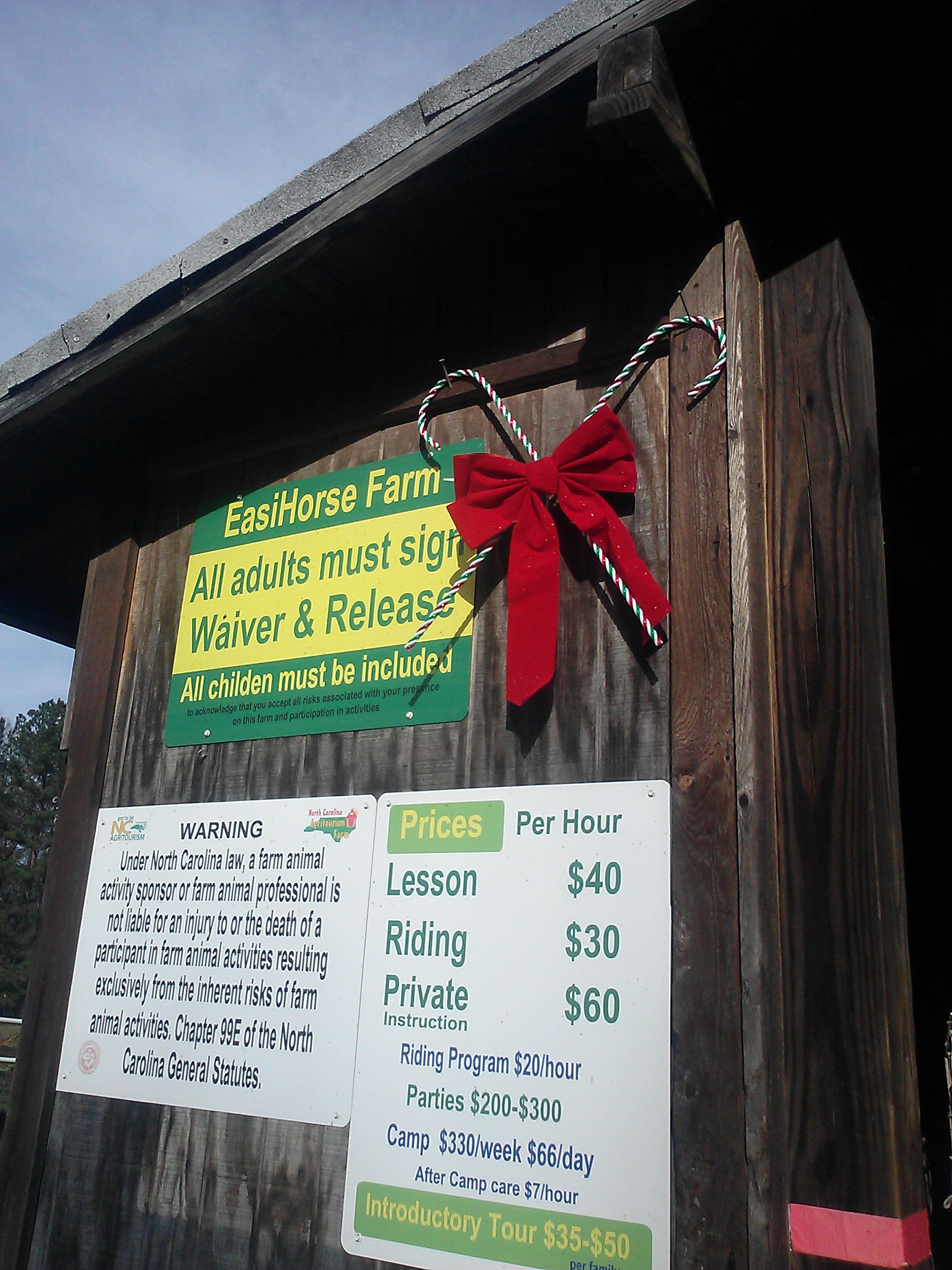

Danger!
Coming to visit our farm is dangerous!
Life is dangerous. The journey in your car to get to us is dangerous.
You must evaluate the dangers and decide what risks you and your family are prepared to take.
We will help you understand some of the dangers, and we will guide you to make your visit to our farm and your interaction with our animals safer; but we cannot make it safe. Ultimately you are responsible for your own safety and we require that every visitor to our farm acknowledges that responsibility by signing (or having a parent/guardian sign) a release and waiver -- a contract by which you accept all responsibility for risks and waive any right to sue us.
You can read and print our Release and Waiver (pdf) here.
If you are planning to bring another parent's child, we ask you to print this form and have that child's parent sign it and bring it when you come.
We require anyone riding on, or sitting on, a horse or pony to wear an approved Riding Helmet(*). We provide helmets but you are welcome to use your own. All of our helmets are white. If you are thinking of buying your own to bring to EasiHorse, it would be helpful if you bought a color that's not white, and if you label your helmet with your name.
We have different rules for riding a horse in water (riding on a swimming horse) because we perceive the dangers to be different. On land, the helmet is primarily there to protect the rider's head from a kick or a hard object like a rock if the rider falls. In water, a falling rider is going to fall on top of the water -- typically the "fall" is just a gentle slide off the horse. The horses' feet are deep in the water and unlikely to come into contact with the rider, who is kept afloat by her PFD. We think helmets would be counter-productive in this circumstance.
So, when riding a horse in water, we do not use a helmet, but we do require that the rider(s) wear a personal flotation device (aka a life vest or PFD). We provide PFDs, although you are welcome to bring your own.
Riding a horse in water is also the only circumstance where we permit two riders to ride one horse at the same time. We do this so that a small child who is nervous about riding a swimming horse (and may not be able to steer the horse) can rider in front of an older, experienced rider. On land, the danger of two people riding the same horse (especially a large or adult rider and a small or baby rider) is that they will both fall off -- the small rider landing on a hard surface and then being crushed by the weight of the large rider. That's not an accident that anyone wants to be a part of! But, in the water, the smaller rider would fall into water, not on a hard surface (and the water surface is at the top of the horse, not at it's feet).
(*) Bicycle Helmets: There is a different national standard for Horse Riding Helmets and Bicycle Riding Helmets. Many bicycle riding helmets (particularly ones for adults) do not have the protection around the back lower skull that riding helmets have. We recommend against using bicycle helmets for horse riding. However, we are not experts in helmet standards; so, if you insist, we will permit you to use your bicycle helmet rather than a horse riding helmet, as long as you understand what this paragraph says.

